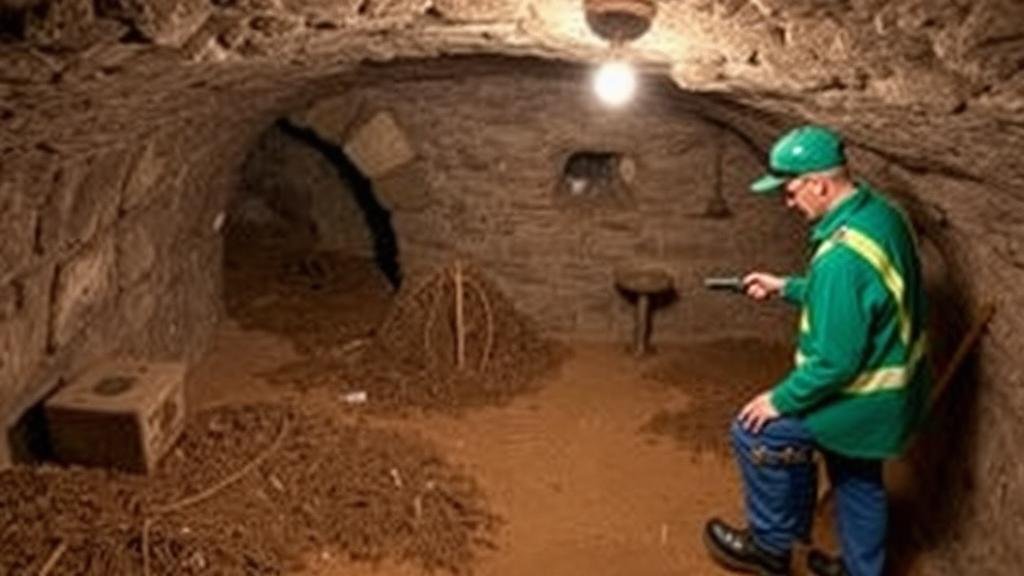How to Find Buried Stashes in Old Cellars and Basement Sites
How to Find Buried Stashes in Old Cellars and Basement Sites
Uncovering buried stashes in old cellars and basements can be an exciting venture that combines elements of history, archaeology, and treasure hunting. Homeowners, hobbyists, and professional archaeologists alike often discover valuable artifacts or items of historical significance hidden beneath the floors of structures long forgotten. This article will guide you through the steps to effectively locate these hidden treasures, supported by real-world examples and industry-standard methodologies.
Understanding the History of Your Site
Before you begin searching, it is crucial to understand the historical context of the building you are investigating. Many basements and cellars were used for various purposes depending on the era, from storage for preserved food to hiding places during times of conflict.
- Research historical documents, such as old maps, property records, and local archives, to understand how the building was used.
- Consult historical societies or libraries for information on previous occupants and significant events associated with the building.
For example, in 2016, a team of archaeologists in Plymouth, Massachusetts, discovered a series of hidden compartments containing wartime relics in the basement of a colonial home, which had housed revolutionary soldiers. They used period maps and local records to ascertain the building’s historical relevance.
Gathering the Right Tools and Equipment
Your success in locating buried stashes can heavily depend on the tools and equipment you utilize. Several options are available, each providing unique advantages:
- Metal Detectors: A high-quality metal detector can help identify buried metal objects like coins, tools, or even jewelry.
- Ground Penetrating Radar (GPR): GPR can reveal hidden structures or voids beneath the surface. This technology is especially useful in identifying large buried items without extensive excavation.
- Hand Tools: Shovels, trowels, and brushes can be invaluable for digging small areas with precision once you identify a potential spot.
In a case study from New Jersey, amateur treasure hunters using metal detectors uncovered a hidden stash of pre-Civil War coins and artifacts in an old cellar that had previously gone unnoticed.
Conducting a Systematic Search
A systematic approach to searching will increase the odds of success. Consider the following steps:
- Clear the Area: Remove any debris or obstacles from the cellar or basement space. This process not only makes it safer but also allows for better visibility.
- Divide the Space: Section off the area into smaller grids to ensure a thorough search. This division reduces the likelihood of overlooking potential hidden stashes.
- Document Findings: Keep a detailed log of areas searched and any items discovered. This documentation can be vital for future investigations or for historical preservation.
A systematic search was conducted in a historic New Orleans home, where researchers used GPR technology to scan the basement and identified specific areas of interest based on anomalies, leading to the discovery of vintage household items and documents.
Consider Environmental and Safety Factors
When searching old cellars and basements, several environmental and safety considerations need to be addressed:
- Air Quality: Ensure proper ventilation and check for hazardous materials such as mold, asbestos, or other contaminants.
- Structural Stability: Evaluate the structural integrity of the basements and cellars to ensure that excavation activities do not compromise the building.
- Legal Considerations: Verify ownership and obtain necessary permissions before digging on private property, as legal implications can arise from unauthorized searches.
For example, during an archaeological dig in a Kansas City basement, safety protocols were enacted to manage air quality in a space where mold was present, ensuring the health of the team while allowing them to uncover remnants of the buildings past.
Analyzing and Cataloging Discoveries
Once you have successfully uncovered items, the next important step is to analyze and catalog your findings. This process provides insight into the historical context of the discovered artifacts and ensures their preservation. Consider the following steps:
- Cleaning Artifacts: Use appropriate cleaning methods based on the material of the artifacts to avoid damage.
- Cataloging: Create a detailed record including the item type, condition, depth of discovery, and any associated historical context.
- Consult an Expert: If you uncover significant historical items, consult a professional historian or archaeologist for further analysis and potential preservation efforts.
In a notable example, a group of volunteer archaeologists in Virginia cataloged a series of colonial bottles unearthed from an old cellar. Their methodical recording led to an exhibition that educated the public about colonial trade practices.
Actionable Takeaways
Finding buried stashes in cellars and basements can uncover remarkable aspects of history. Here are the essential steps to perform your own search effectively:
- Research the historical context of your site.
- Equip yourself with the right tools, such as metal detectors and GPR.
- Conduct a systematic search while documenting your findings.
- Prioritize safety and legal considerations.
- Analyze and catalog your discoveries for potential historical significance.
By following these guidelines, you can engage in a rewarding exploration that not only adds to your knowledge but also contributes valuable insights into our shared history.



